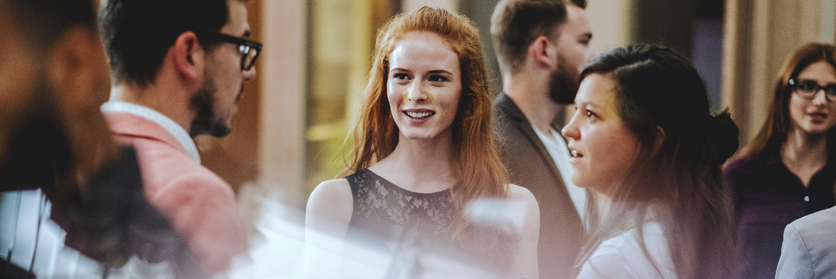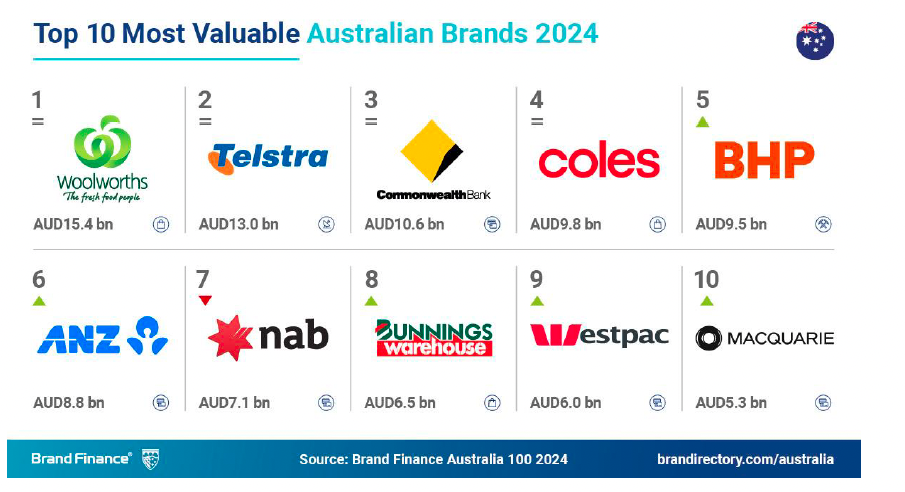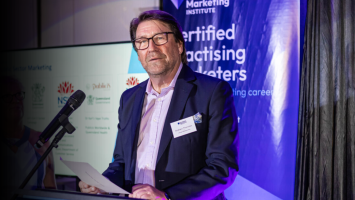Google’s all-in-one AI advertising flywheel: Officeworks, Les Mills, Acceleration share stage as search giant dishes up latest tech transformations using the hard currency of marketing ROI

What you need to know:
- During its Sydney upfront-style event for advertisers, Google outlined its vision for a world where AI creates an all-in-one growth and efficiency flywheel for advertising.
- Making this a reality is a raft of fresh AI-powered platform enhancements stretching from new creative asset generation controls and immersive ads experiences to visual storytelling features and improved measurement controls.
- The currency for AI adoption for brands such as Les Mills and Officeworks is operational efficiency, better customer targeting and media ROAS, and commercial currency. Both cited double-digit improvements to conversion and performance off the back of trials using AI in their advertising efforts.
- The desire to drive profitable growth reflects the tough trading conditions brands are operating in. As per Acceleration’s Tom Braybrook: “There’s a quiet optimism creeping in with a number of clients but the big elephant in the room is probably accountability… We are investing a lot and clients are asking us for a lot of measurable projects to quantify marketing and media back into business metrics more and more often.”
- On the consumer front, Google Ads Research APAC head, Rachael Powell, says one of the big trends advertisers must square up to in search is growth in “Exactly what I want search” through a blossoming list of modifiers included in search queries. According to Google and Ipsos’ report, The Relevance Factor, consumer queries with five or more words are growing 1.5x faster than shorter queries via search.
- Another trend is consumers searching far and wide for information. Google research showed 57 per cent now use more than five platforms and seven different touchpoints and are searching at least three categories at any one time.
- The key message from Google and brands at the Google Marketing Live event is for brands to start experimenting to adopt AI or risk missing competitive edge. As Les Mills+ global digital director, Marina Mola put it: “If it’s safe to try, which is the term we use, we’ll run the experiment, see what the results are and use the data and insights to inform what we do next”.
We see a future where AI will supercharge the entire advertising lifecycle, from assembling your creative, to running your media, to measuring results. Think of it as an ‘all-at-one’ growth and efficiency flywheel. That’s our vision for what AI could do for advertising.
Google’s annual upfronts-style event at Sydney’s Overseas Passenger Terminal was dense with product announcements as the search giant articulated its latest platform functionality and dished out Australian availability dates for several AI-powered product releases. These stretch from new creative asset generation controls and immersive ads experiences to visual storytelling features and improved measurement controls.
“We see a future where AI will supercharge the entire advertising lifecycle, from assembling your creative, to running your media, to measuring results. Think of it as an ‘all-at-one’ growth and efficiency flywheel. That’s our vision for what AI could do for advertising,” said Google Australia managing director, Mel Silva.
Product presentations came with a dollop of local case studies showing how Google’s AI-powered capabilities have started paying dividends for advertisers such as Les Mills, Canva, Officeworks, The Iconic and Virgin Australia. And media efficiency and commercial payback were most decidedly the currency Google used to tell its evolving advertising story.
Take the stats showcased by Google AUNZ head of performance solutions, Rick Gove. Using results derived from studies by Google and Kantar, the executive said combining its new-and-improved Broad Match (which matches a brand’s keywords to audiences) with Smart Bidding platforms (allowing advertisers to set performance targets and customise settings to unique business goals) saw The Iconic chalk up a 96 per cent increase in sales and 31 per cent improvement on return on ad spend. They also gave Virgin Australia 2x the number of bookings at the same CPA, while Canva secured 35 per cent more leads while decreasing its CPA by 8 per cent, Gove said.
The numbers kept coming. Gove also revealed advertisers using the ‘Power Pair’ (a combination of search and performance campaigns) saw a 27 per cent increase in conversions thanks to AI improvements. Among the platform enhancements showcased by Gove are asset-level reporting in Performance Max (Pmax) so advertisers can see conversion metrics for each creative asset, plus new profit-based performance target settings coming in H2, 2024.
“We’ve long accepted that delivering the right message to the right customer at the right time has been the central challenge of marketing. But with ongoing media fragmentation and near constant evolution of consumer behaviour, practically doing this became hugely complex,” said Gove. “AI has enabled a new era of ads solutions that are uniquely and powerfully positioned to help you meet your customers’ expectations of relevance, and drive profitable growth for your business.”
People are searching with more specificity, they’re searching more broadly, and they’re searching in new and different ways… but people are also putting a lot more effort into their searching behaviour.
The way consumers search is changing
Anecdotally, one delegate told Mi3 that 60 per cent of their search activity now goes through ChatGPT. It indicates just how much of a threat Gen AI platform presents to the world’s largest search giant. It’s also one of many ways consumer behaviour is evolving when it comes to searching online.
Google Ads Research APAC head, Rachael Powell, itemised three key trends advertisers must square up to in search. The first is growth in “Exactly what I want search” through a growing list of modifiers included in search queries. According to Google and Ipsos’ report, The Relevance Factor, consumer queries with five or more words are growing 1.5x faster than shorter queries via search.
Powell’s second trend is consumers searching far and wide for information. Google research showed 57 per cent now use more than five platforms and seven different touchpoints and are searching at least three categories at any one time.
Trend three is the rise of search beyond words using Google Lens off the back of four in five people not being sure of the right words to describe what they’re searching for. Today, 12 billion consumers are usual visual-based search per month, and one in four has commercial intent, Powell said.
“People are searching with more specificity, they’re searching more broadly, and they’re searching in new and different ways… but people are also putting a lot more effort into their searching behaviour. Globally, when we look at consumer journeys there are all these different touchpoints,” she said. “Yet a consumer is able to find highly relevant information only 26 per cent of the time, or 23 per cent of the time in Australia.
“There is opportunity to deliver highly relevant information at scale… it’s always been challenging because as technology gets better, consumer journeys get more complex.”
It’s by showing up in the most relevant way brands give consumers confidence to choose their products and services, Powell added.
Having a joined-up view of metrics is one thing we’re finding our top clients are using to differentiate themselves. They also have a real focus on being able to translate that to business metrics – what is marketing’s contribution to revenue and profit is coming up a lot more. They’re using that to position marketing as a growth centre and importantly, a profit centre.
Proving media’s contribution: Acceleration, Officeworks, Les Mills talk ROI
Showing up through relevance and frictionless experiences driven by adaptability, speed to market and solid media cut through – often using first-party data – were certainly on display during a brand panel at Google’s event. Before sharing their AI experiences, Officeworks, Les Mills and Acceleration were all reflecting on the tough current market conditions and their desire to find sustainable, profitable growth through operational efficiencies and optimisation.
According to Acceleration managing director, Tom Braybrook, this is seeing measurement and a need to prove out the value of media against business outcomes dominating client conversations right now. Acceleration is GroupM’s Google Marketing Cloud sales and support unit.
“There’s a quiet optimism creeping in with a number of clients but the big elephant in the room is probably accountability,” Braybrook said. “There should be a level of accountability broadly speaking across every business. But we have found in the last year or so, the contribution of media to the bottom line of the business is by far and away the question coming up time and again. We are investing a lot and clients are asking us for a lot of measurable projects to quantify marketing and media back into business metrics more and more often.”
Braybrook also pointed to the desire for adaptability across a range of industries.
“Businesses that invested early on in transformation – digitising sales flows, managing call centre capacity and so on – are the ones that can pull more levers in this time. Everyone is grappling with retention, upsell and cross-sell. If you need to ramp up acquisition to help with what’s happening in upsell and cross-sell, you need to be able to do that without overwhelming call centres. That’s making that adaptability very important,” he said.
For Officeworks head of online, digital marketing and loyalty, Simon Sharland, a key consumer behaviour it’s grappling with is people moving back and forth between online and in-store shopping. During the pandemic, expectations of what a good online shopping experience rose, he said – and they’re rising again as people transition back to in-store buying. That makes connecting the journey between online and 170 retail stores a critical one.
“It needs to be more integrated, easier product discoverability online, and availability of product being very specific to finding product in local stores,” he said.
Another macro trend confronting Officeworks is its shift into a destination for technology categories such as phones, gaming accessories and laptops. This means a new type of customer and insight for the retailer, which it’s tapping through significant first-party data investment. But it also makes for a very competitive landscape, Sharland said.
“It means we have to continue to be more efficient and optimise what we do from a media perspective,” he said.
Fitness app Les Mills is also grappling with that shift back to in-person – this time, people flocking back to gyms. “The flip is we haven’t seen continued accelerated growth that we saw in digital fitness during the pandemic time. We expected it to continue but hasn’t at the same rate,” Les Mills+ global director Marina Nola, said. “Digital fitness is still really relevant and insights tell us people are adopting hybrid fitness habits, the same as in their work.
“But the digital landscape is increasingly competitive. Consumers have a huge range of options to choose from. This is combined with an increase in the cost-of-living, which means people are trying to reduce discretionary spend and subscription-based services come under scrutiny. On top of that is a plethora of free stuff on the web.
“It’s never been more important to bring our unique proposition to customers and be able to cut through the noise… it comes down to how we use tools and technology to optimise our media spend. Because what we’re trying to do now is drive sustainable, profitable growth.”
AI is perceived as an answer as these brands look to remain agile, target and importantly report on the impact of their advertising efforts.
“Businesses really driving progress and getting in front of their competitors are the ones able to think about value. It’s not saying I’m lead gen and I’m going to pump through more leads in the funnel, it’s ensuring quality of that propensity to convert,” Braybrook said. “Having a joined-up view of metrics is one thing we’re finding our top clients are using to differentiate themselves. They also have a real focus on being able to translate that to business metrics – what is marketing’s contribution to revenue and profit is coming up a lot more. They’re using that to position marketing as a growth centre and importantly, a profit centre.”
For Les Mills, data isn’t just yielding benefits in the moment, but fuelling future campaign efficiencies. “That compounding effect is really important,” Nola said.
Using its first-party data to match consumers who have clicked on an ad from a browser or device is part of an enhanced conversion effort that’s seen Les Mills sign-ups via YouTube lift by 27 per cent. Using Google AI to find more of the high-value customers, then employing value-based bidding delivered 45 per cent higher returns than that of standard control campaigns.
“We’re leaning into test-and-learn, looking at results to inform what our next steps are. We have collaborated with Google on a lifetime value model – how we can look at prospective customers coming to website, assess what lifetime value might be then optimise how we bid on those customers based on lifetime value they may drive,” Nola told attendees.
Video and visual storytelling are also vital tools for Les Mills, and Nola pointed to an experiment in the UK with Demand Gen using AI to help reach the right audiences across Google’s ecosystem. The result was a 500 per cent increase in signups and reduced cost of spend. This is now rolling out across other markets.
With its first-party data strategy over the last three years driving up customer identification and loyalty, Officeworks has a much broader customer group it can market to and learn from.
“This allows us to do a lot of things we couldn’t do previously around audience creation and engaging customers in a much more personalised, relevant manner. For example, with back to school campaigns there’s much more accuracy around what a family might need,” Sharland said.
“When you get to that point, we need to make decisions about what data we will use. We can use margin data for improved bidding, and store data to help with some trials as well.”
The best example Officeworks shared was a test case with Pmax using low-value SKUs to de-risk the test.
“The results were good, we threw in the mix for Black Friday and Cyber Monday sales,” Sharland said. Results from September to December against the previous year showed a 95 per cent increase in conversion. “We threw more money at it and had four times more conversions than the previous year.”
Another use case for digital media is to drive Officeworks’ in-store traffic. “We’ve engaged in a Pmax trial to optimise towards store visits and outcomes. The test compared to control group drove a 25 per cent increase in in-store traffic and sales over the test period,” Sharland said.
AI-driven creative in media was another efficiency play trialled by Les Mills to localise and translate not just advertising, but even product videos in-language. “I think the power was in how quickly we did that AI experiment and what that presents in terms of scale and operational efficiencies,” Nola said.
Nola’s overarching advice for brands is to just get started by finding a safe experiment people feel comfortable running AI tests in.
“If it’s safe to try, which is the term we use, we’ll run the experiment, see what the results are and use the data and insights to inform what we do next,” she added.





